
Reaching this archaeological gem requires a challenging multi-day trek through breathtaking landscapes, making it a dream destination for hikers seeking an off-the-beaten-path experience. This guide will walk you through everything you need to know about the Choquequirao Trek, from what to expect on the trail to essential tips for making the journey as rewarding as possible.
Nestled high in the cloud forests of the Peruvian Andes, Choquequirao is often referred to as the "sister city" of Machu Picchu due to its striking similarities in structure and historical significance. Built by the Incas in the 15th century, this remote archaeological site remains remarkably well-preserved, offering visitors a glimpse into the grandeur of the Inca Empire. Unlike its famous counterpart, Choquequirao is only accessible by foot, requiring a challenging multi-day trek through steep canyons and rugged landscapes, which keeps visitor numbers low and enhances its sense of mystery and adventure.
For those seeking an off-the-beaten-path experience, Choquequirao is a must-visit destination. The journey to the site rewards hikers with breathtaking mountain views, diverse ecosystems, and an unparalleled sense of solitude, making it an ideal trek for those who crave exploration beyond the typical tourist routes. Whether you're drawn by the history, the challenge, or the untouched beauty of the region, Choquequirao promises an unforgettable adventure that few travelers get to experience.
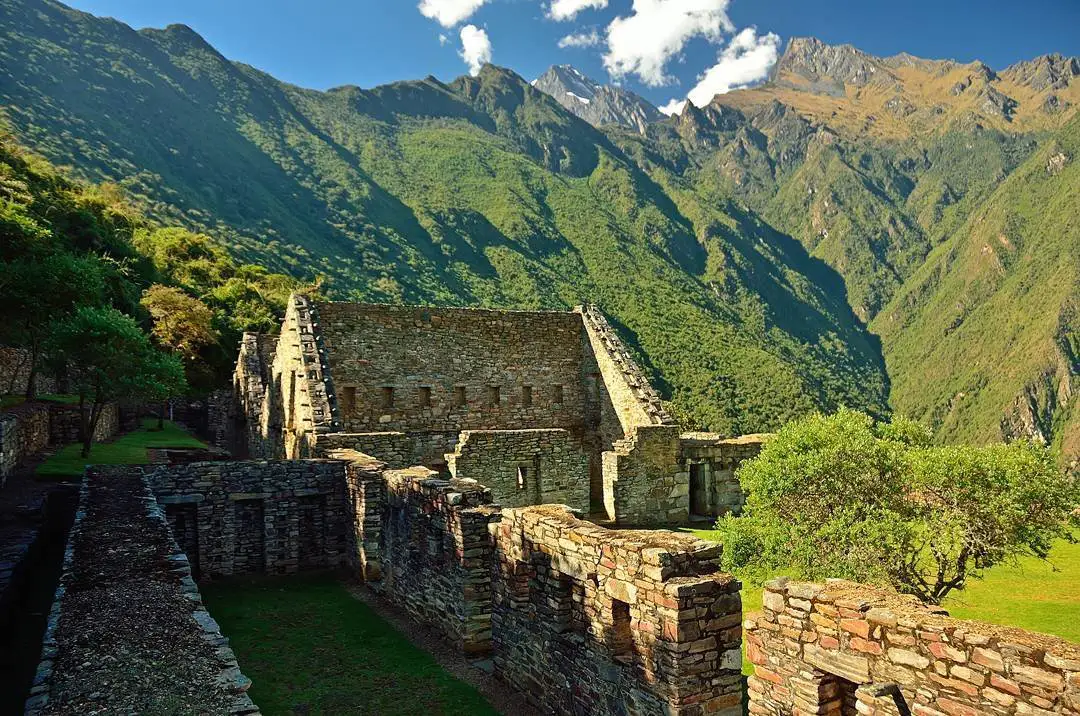
Choquequirao, a breathtaking archaeological site nestled high in the Peruvian Andes—an adventure like no other. Photo by Juanca loayza, under the CC BY-SA 4.0 < https://creativecommons.org/licenses/by-sa/4.0 > license, via Wikimedia Commons .
TREKKING TOURS:
The Choquequirao Trekis one of Peru’s most rewarding yet challenging hikes, taking adventurers through dramatic Andean landscapes, deep river canyons, and high-altitude cloud forests. Unlike the well-trodden Inca Trail, this route remains relatively untouched, offering a sense of solitude and raw natural beauty.
The trek typically takes 4 to 5 days round trip, depending on your pace and itinerary. It is considered moderate to difficult, requiring a good level of fitness due to the steep ascents and descents. The most challenging sections involve a 1,500-meter (4,900-foot) descent to the Apurímac River, followed by an equally strenuous climb up to the ruins. Expect long hiking days, often covering 6 to 10 hours of trekking per day.
The total distance of the trek is approximately 58 kilometers (36 miles) round trip from the trailhead at Capuliyoc. Elevation changes are significant, ranging from 1,450 meters (4,757 feet) at the Apurímac River to 3,050 meters (10,007 feet) at Choquequirao, making proper acclimatization essential.
The best time to hike the Choquequirao Trek is during the dry season (May to October) when the trails are in better condition, and rainfall is minimal. The wet season (November to April) brings heavy rains, making the paths slippery and river crossings more difficult, though the scenery remains lush and vibrant. If you prefer fewer crowds while still enjoying favorable weather, April and October are excellent shoulder-season months to consider.
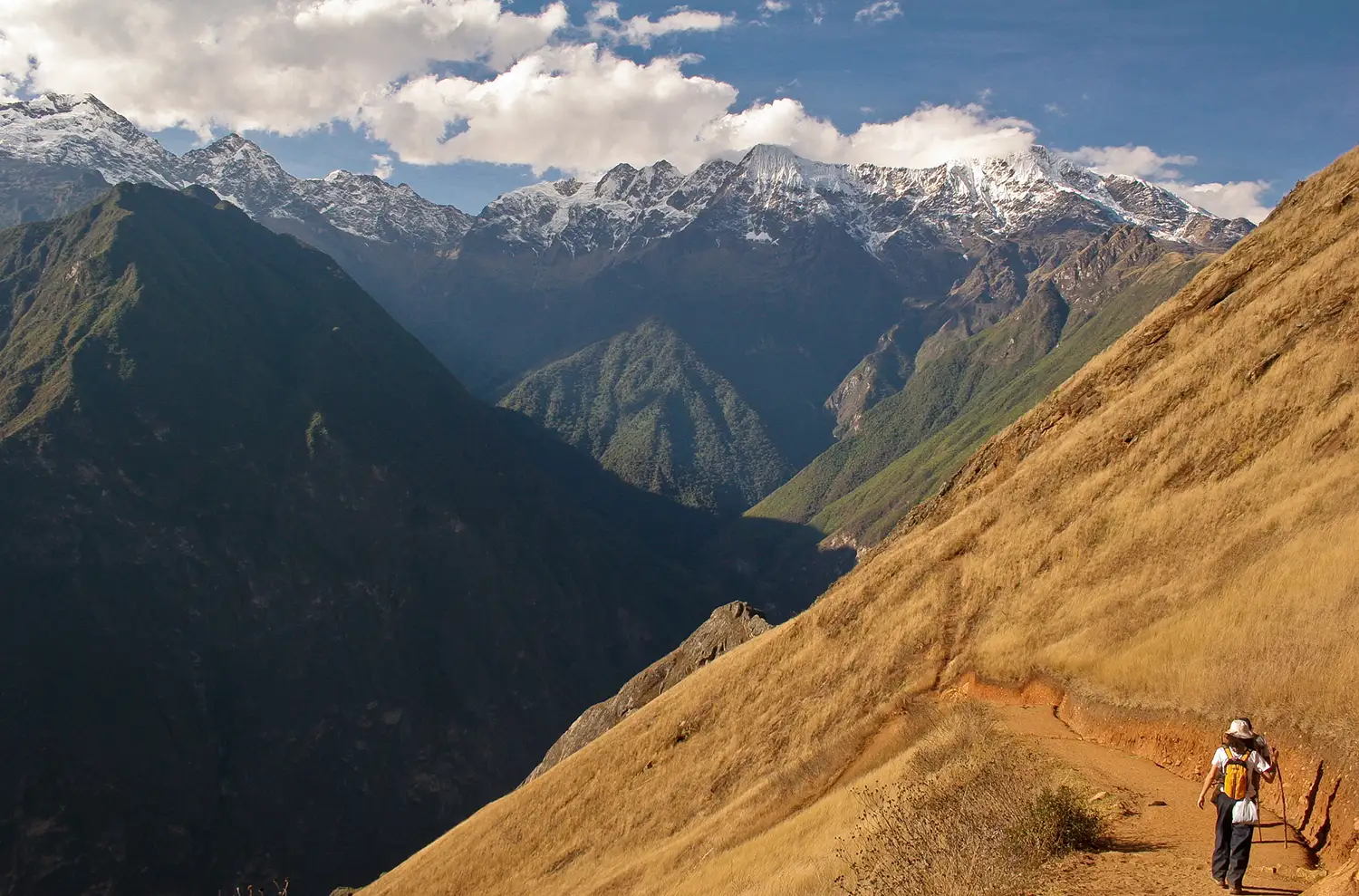
Experience stunning panoramic views along the Choquequirao Trek, where towering mountains, deep canyons, and lush cloud forests create a truly unforgettable landscape. Photo by Danielle Pereira, under the CC BY 2.0 < https://creativecommons.org/licenses/by/2.0 > license, via Wikimedia Commons .
There are multiple ways to experience the Choquequirao Trek, ranging from the standard 4-5 day round-trip hike to extended routes that connect to Machu Picchu for an even more adventurous journey. Below is a breakdown of the most popular options.
This is the most common itinerary, taking trekkers from the trailhead at Capuliyoc to the ruins and back.
Your adventure begins early in the morning with a scenic drive from Cusco to the trailhead at Capuliyoc (2,900m / 9,514ft), passing through picturesque Andean villages and breathtaking mountain landscapes. Upon arrival, you’ll meet your trekking team and begin the descent into the Apurímac Canyon, enjoying stunning views of snow-capped peaks and the winding river below.
The trail leads downhill toward Chikiska (1,900m / 6,234ft), a lush, subtropical area where you'll set up camp for the night. Along the way, you'll experience diverse ecosystems, from dry mountain terrain to green valleys filled with native flora and fauna. Dinner and rest prepare you for the next day's challenge.
After an early breakfast, you’ll begin the challenging ascent from Chikiska (1,900m / 6,234ft) to Santa Rosa (2,100m / 6,889ft), a steep climb that rewards you with spectacular views of the Apurímac River below. This section of the trek is demanding, but the breathtaking scenery and sense of accomplishment make it worthwhile.
From Santa Rosa, the trail continues uphill toward Marampata (2,850m / 9,350ft), passing through a mix of lush vegetation and rugged terrain. As you ascend, you'll notice the climate shifting, with cooler air and more abundant greenery. Upon reaching Marampata, you'll be greeted with stunning panoramic views of the surrounding mountains and, in the distance, your first glimpse of Choquequirao.
Here, you'll set up camp and have time to relax, enjoy a well-earned meal, and prepare for the final approach to the archaeological site the next day.
Today is dedicated to exploring the breathtaking Choquequirao archaeological complex (3,050m / 10,006ft), one of the most spectacular and least-visited Inca sites. After an early breakfast, you’ll hike from Marampata to the ruins, a short but rewarding trek that brings you closer to the “Cradle of Gold.”
Once inside, your guide will lead you through the extensive terraces, ceremonial plazas, and intricate stone structures, sharing insights into Choquequirao’s historical and cultural significance. With fewer visitors than Machu Picchu, you’ll have the chance to take in the peaceful atmosphere and fully appreciate the grandeur of this hidden Inca city.
You’ll visit the main plaza, agricultural terraces, and the impressive llama carvings, as well as areas still covered by dense vegetation, emphasizing the ongoing excavation and restoration efforts. After a full day of exploration, you’ll return to Marampata for dinner and a well-deserved rest, surrounded by breathtaking mountain landscapes.
After an early breakfast, you’ll begin your descent from Marampata back toward the Apurímac River. As you retrace your steps, you’ll have stunning views of the deep canyon and surrounding mountains. The trail takes you through Santa Rosa, where you can take a short break before continuing the steep descent to La Playa (Playa Rosalinas, 1,550m / 5,085ft), located along the Apurímac River.
Here, you’ll have a well-earned rest before starting the challenging uphill hike back to Chikiscca (1,900m / 6,234ft). This section can be demanding due to the heat, but you’ll be rewarded with beautiful landscapes along the way. Upon arrival at the Chikiscca campsite, you’ll settle in for the evening, enjoy a hearty dinner, and rest after a long but rewarding day of trekking.
On the final day of your trek, you'll enjoy an early breakfast before setting out on the last stretch of the journey. The trail ascends gradually from Chikiscca back to Capuliyoc (2,900m / 9,514ft), offering breathtaking views of the Apurímac Canyon one last time. Along the way, you’ll pass through dry Andean forests and may spot native wildlife such as condors soaring above.
Upon reaching Capuliyoc, you'll take a well-deserved break and celebrate the completion of your trek before meeting your transportation back to Cusco. The scenic drive will take you through the picturesque Andean countryside, allowing time to reflect on the incredible adventure you've just experienced. You’ll arrive in Cusco in the afternoon, where you’ll be dropped off at your hotel, marking the end of an unforgettable journey to Choquequirao.
For adventurers looking for a longer, more epic journey, the trek from Choquequirao to Machu Picchu is an incredible route that combines two legendary Inca sites.
Key Highlights:
This 7-9 day trek is much less traveled than the traditional Inca Trail, providing an even greater sense of adventure and discovery.
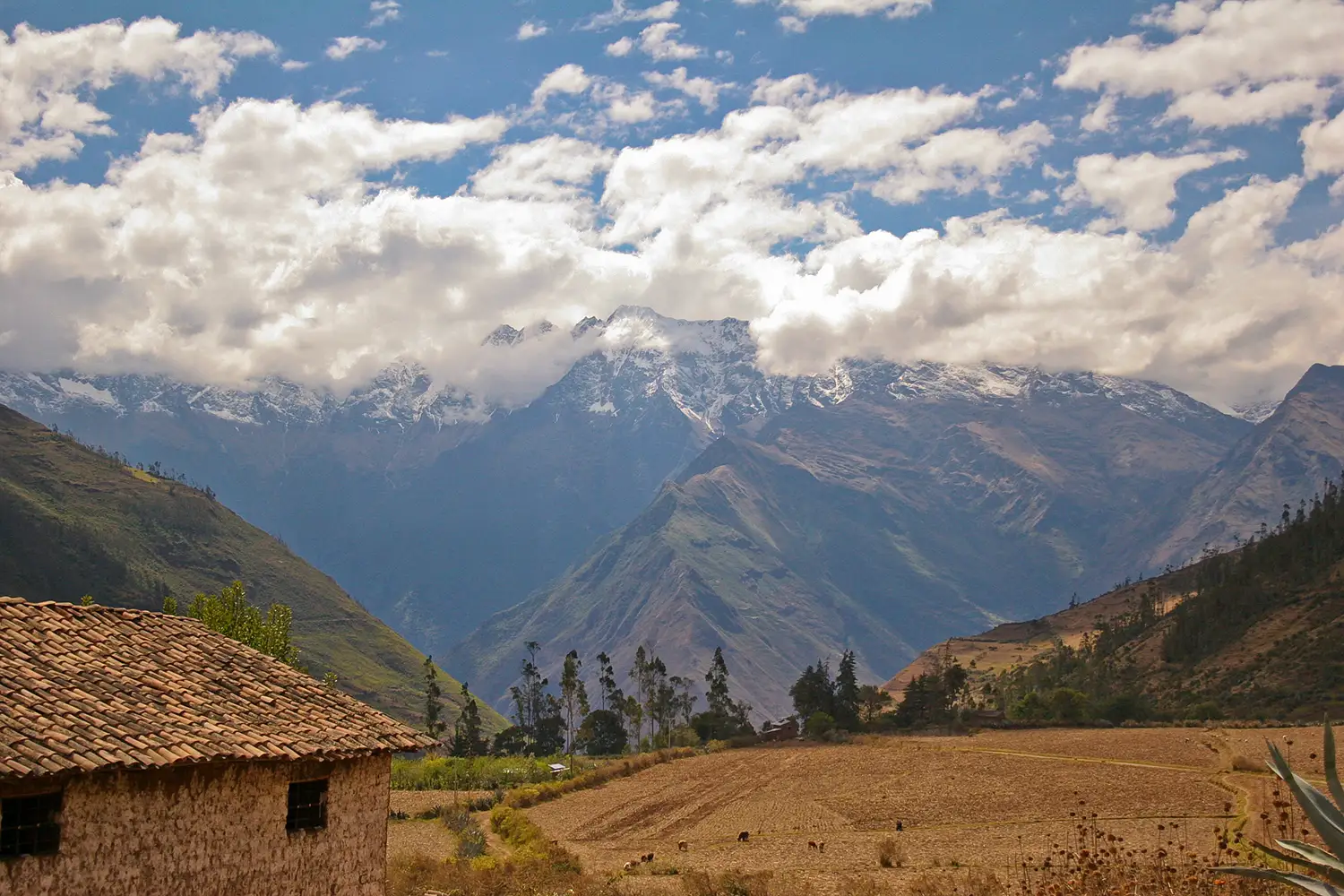
Embarking on the trek of a lifetime, where every step leads to unforgettable adventures and breathtaking views. Photo by Danielle Pereira, under the CC BY 2.0 < https://creativecommons.org/licenses/by/2.0 > license, via Wikimedia Commons .
The Choquequirao Trek is a challenging but immensely rewarding journey, requiring physical preparation, the right gear, and proper acclimatization to ensure you get the most out of this incredible adventure. Here's how you can get ready for the trek:
While the Choquequirao Trek doesn’t require professional-level fitness, a good base level of physical conditioning is essential. The trek involves long days of hiking with significant elevation changes, so it’s important to prepare your body for steep ascents, descents, and extended hours of walking. Below are a few training tips:
Packing light yet efficiently is crucial for the Choquequirao Trek. Here’s a packing list for the essentials:
The trek reaches high altitudes (up to 3,050m/10,007ft at Choquequirao), and it’s crucial to allow your body to adjust to the thinner air before the trek. Here are some helpful tips, and for more information, you may also find our blog on Altitude Sickness in Peru: Symptoms and Treatment Tips useful.
With the right fitness training, gear, and acclimatization, you’ll be ready to tackle the Choquequirao Trek and experience its spectacular beauty.
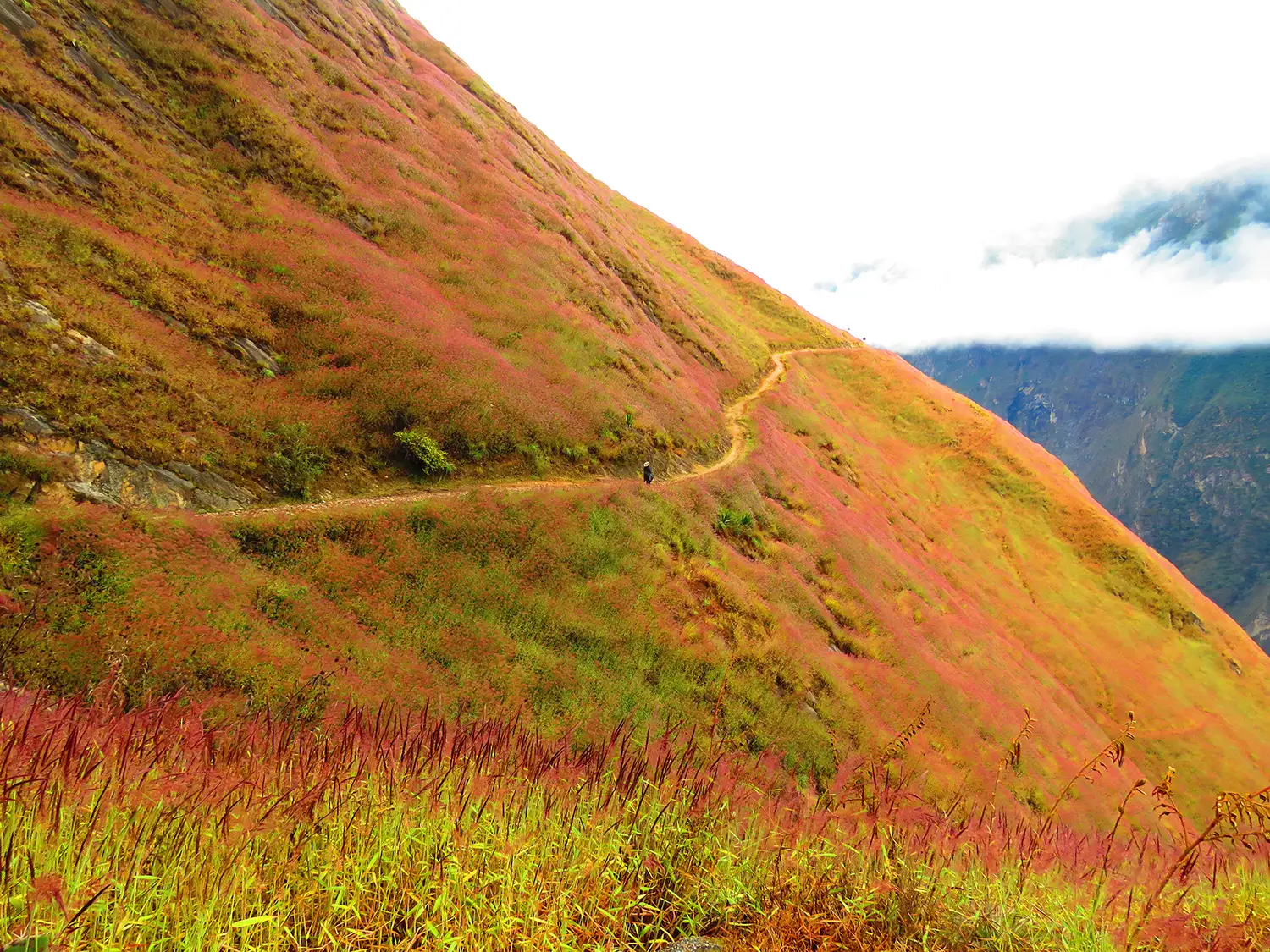
Breathtaking views along the Choquequirao Trek, where rugged mountains and lush valleys create a stunning backdrop for your adventure. Photo by Ana G. Pumacayo, under the CC BY-SA 4.0 < https://creativecommons.org/licenses/by-sa/4.0 > license, via Wikimedia Commons .
The Choquequirao Trek is not just about reaching the magnificent ruins—it’s a journey through breathtaking landscapes, diverse ecosystems, and rich history. Here are some of the most remarkable highlights along the way:
One of the deepest and most breathtaking canyons in the world, the Apurímac Canyon is a highlight of the Choquequirao Trek. Towering cliffs and rugged landscapes create a dramatic backdrop, while the Apurímac River carves its way through the valley far below. The ever-changing scenery, from steep rocky slopes to lush green patches, makes every viewpoint along the trek unforgettable. This awe-inspiring natural wonder not only offers stunning panoramic vistas but also serves as a habitat for Andean condors, adding to the magic of the journey.
A breathtaking vantage point near the start of the Choquequirao Trek, Capuliyoc Viewpoint offers sweeping panoramic views of the Apurímac Canyon, the winding river below, and the towering snow-capped peaks in the distance. This scenic overlook is an ideal spot to take in the vast Andean landscape, especially at sunrise or sunset when the sky is painted in vibrant hues.
As you navigate the varying elevations of the trek, you’ll journey through enchanting Andean cloud forests, where mist drapes over the dense, green canopy, creating a mystical and otherworldly atmosphere. These lush ecosystems are home to a rich variety of flora and fauna, including delicate orchids, towering ferns, and moss-covered trees. The forests also provide a sanctuary for diverse wildlife, such as hummingbirds, spectacled bears, and colorful butterflies. Walking through these misty landscapes, with the sounds of birdsong echoing in the distance, adds a magical touch to the adventure, making it a truly immersive experience in nature.
The trek’s challenging ascents lead to breathtaking high-altitude mountain passes, where hikers are rewarded with sweeping panoramic views of the towering Andean peaks. These rugged crossings offer glimpses of majestic mountains like Salkantay and Padrayoc, their snow-capped summits standing in stark contrast to the deep valleys below. The crisp, thin air and dramatic landscapes create an awe-inspiring experience, making each climb worth the effort. These passes also provide a unique perspective on the diverse terrain of the region, from rocky outcrops to grassy highlands, offering a moment of reflection and accomplishment before descending into the next leg of the journey.
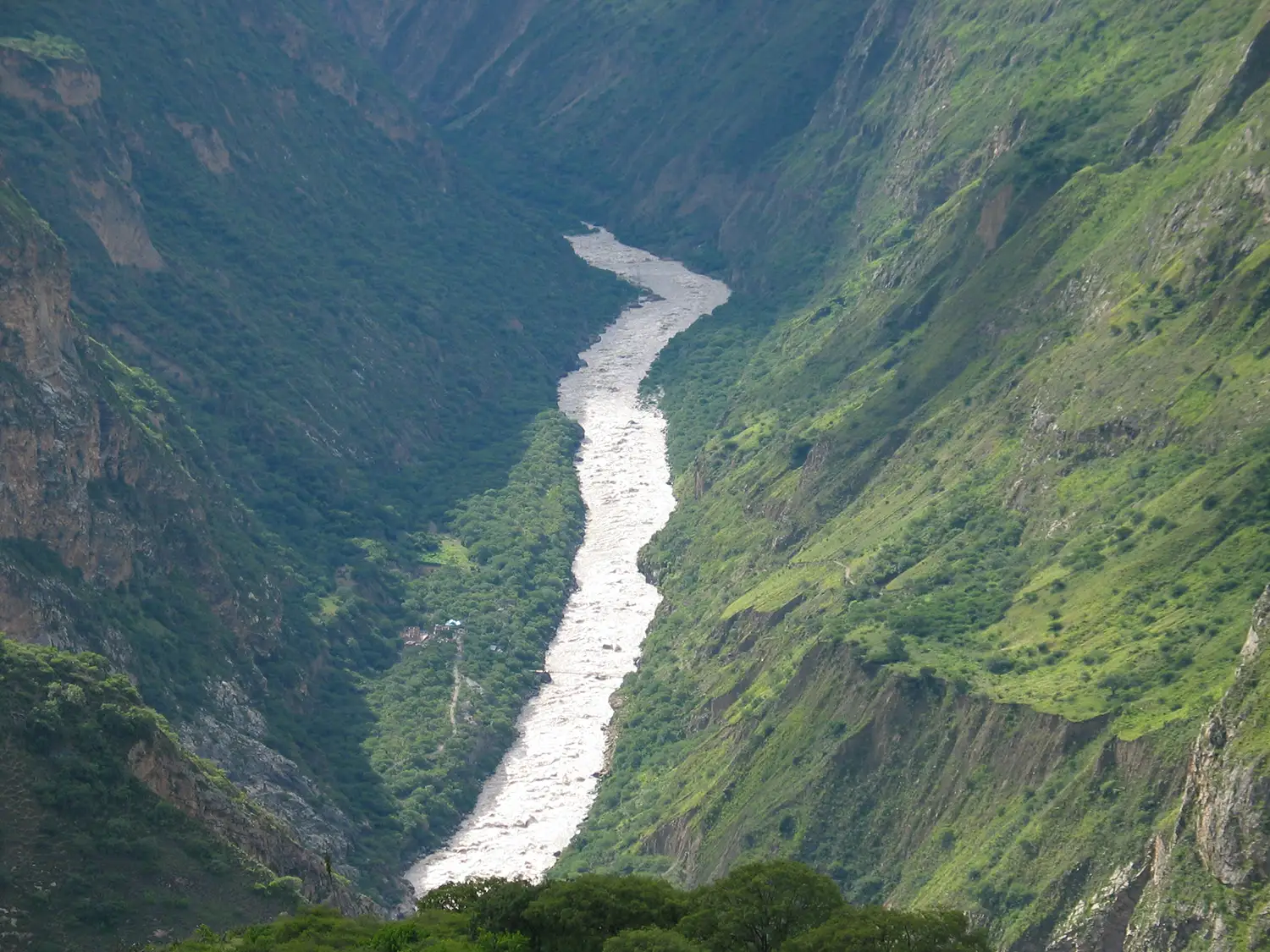
The breathtaking Apurímac Canyon—one of the deepest canyons in the world—carves through the Andes, offering dramatic views of rugged cliffs and the winding river below. Photo by Bryan Dougherty from New York City, USA, under the CC BY-SA 2.0 < https://creativecommons.org/licenses/by-sa/2.0 > license, via Wikimedia Commons .
One of the most majestic birds in the world, the Andean condor is a symbol of the high Andes. With an impressive wingspan of up to 3.3 meters (10.8 feet), these massive birds can often be seen gracefully soaring over the Apurímac Canyon, riding the warm air currents. Spotting one of these magnificent creatures in flight is a breathtaking experience, as they glide effortlessly above the rugged landscape, embodying the spirit of the Andean wilderness.
Though elusive, the Andean spectacled bear is a fascinating sight for those lucky enough to encounter one in the wild. As the only bear species native to South America, these solitary and shy creatures inhabit the dense cloud forests and rugged mountain slopes of the Andes. Recognizable by the unique white or yellowish markings around their eyes, which resemble spectacles, these bears play a crucial role in maintaining the balance of their ecosystem. While sightings are rare, the remote and pristine landscapes of the Choquequirao region provide a natural habitat for them, making every glimpse a truly special experience.
As you journey along the trail, you'll encounter a vibrant display of native flora, particularly in the lush cloud forest sections. Delicate orchids, found in a variety of striking colors, thrive in the humid environment, clinging to trees and rocks along the path. These exotic flowers, some of which are unique to the Andean region, add a splash of color to the dense greenery. Alongside them, bromeliads flourish, their distinctive rosettes capturing water and providing shelter for small insects and birds. This rich plant life enhances the mystical beauty of the trek, offering nature lovers a chance to appreciate the incredible biodiversity of the region.
The trek is teeming with diverse wildlife, offering plenty of opportunities for nature enthusiasts to observe Andean fauna in their natural habitat. Dazzling hummingbirds, with their iridescent feathers, flit among the flowers, feeding on nectar and adding vibrant flashes of color to the landscape. Parakeets chatter in the trees, while eagles and hawks soar overhead, scanning the terrain for prey. Along the way, you may also spot Andean foxes, deer, and even the elusive spectacled bear. The combination of rich birdlife and fascinating mammals makes the journey even more immersive, connecting hikers to the incredible biodiversity of the region.
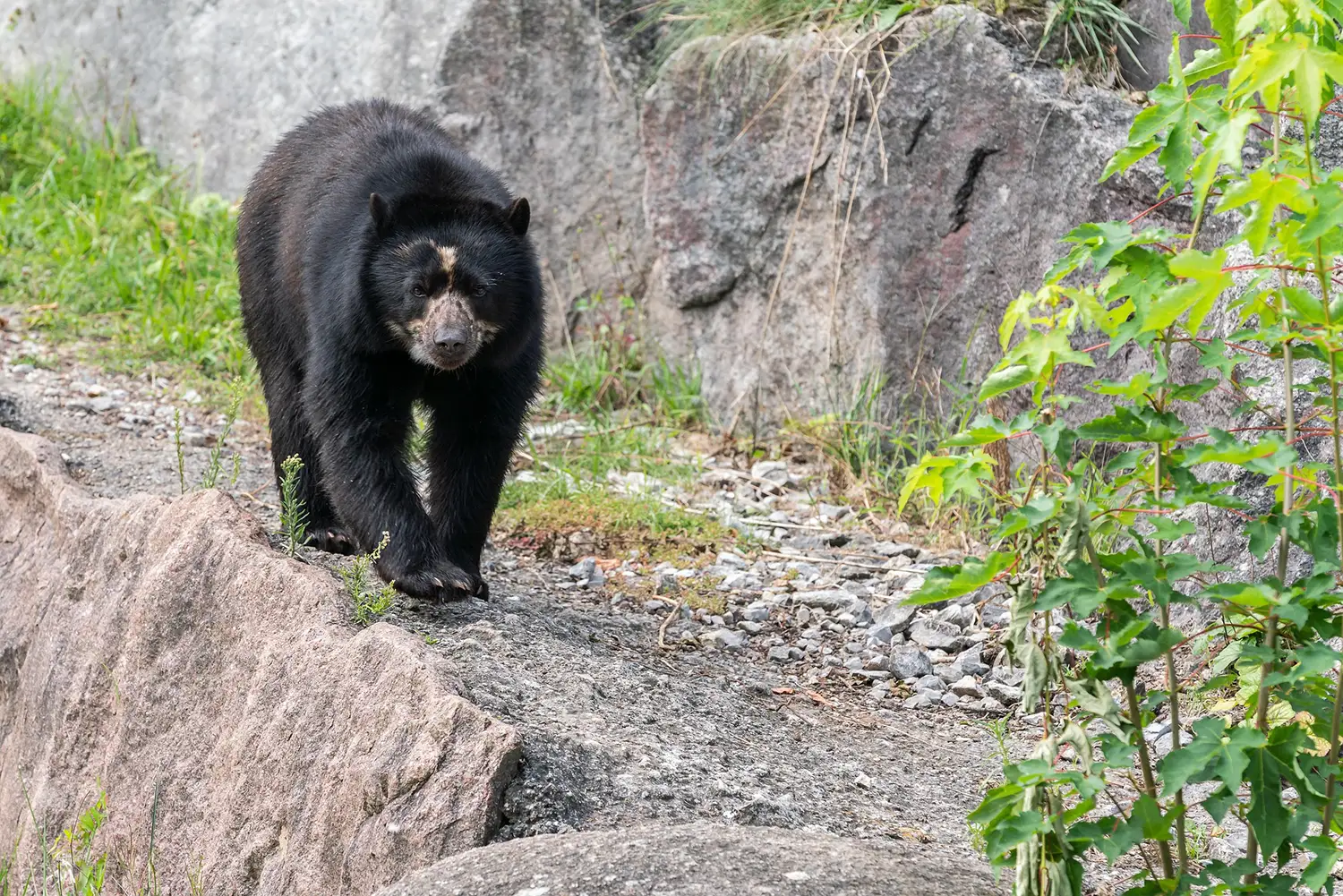
Rare and elusive, the Andean spectacled bear inhabits the remote regions of the Andes. Photo by LN_Photoart on Pixabay .
Often referred to as the "sister city" of Machu Picchu, this massive Inca complex remains one of the best-kept secrets of the Andes. Built in the 15th century, Choquequirao served as a refuge for the Incas resisting Spanish conquest.
These well-preserved agricultural terraces, some still partially covered in lush vegetation, showcase the ingenuity of Inca engineering. Built to maximize crop cultivation in the steep Andean terrain, these terraces highlight the Incas' advanced farming techniques and their remarkable ability to adapt to the mountainous landscape. The intricate irrigation systems and carefully designed stone walls reveal the sophistication of their agricultural practices, which allowed them to sustain large populations in remote regions.
One of the most fascinating and unique features of Choquequirao is a series of meticulously crafted stone terraces adorned with intricate white stone llama figures embedded into the walls. These striking carvings, known as the "Llama Terraces" or "Llamayoq," are believed to have held ceremonial or religious significance, possibly honoring the importance of llamas in Inca society. Llamas were essential for transportation, agriculture, and rituals, and their depiction in these terraces suggests a deep cultural and spiritual connection. Hidden for centuries beneath layers of vegetation, these terraces serve as a testament to the artistry and symbolism of Inca architecture, making them one of the most intriguing discoveries within the archaeological complex.
The site features expansive open plazas, sacred temples, and designated ritual spaces, each reflecting the deep spiritual and social significance of Choquequirao within Inca culture. These plazas served as gathering places for ceremonies, communal activities, and important events, while the temples and religious structures highlight the Incas' devotion to their deities, particularly the sun god, Inti. The layout and intricate stonework demonstrate the advanced engineering and architectural skills of the Inca civilization, with precisely cut stones fitted together without mortar. Many of these spaces are still being excavated, offering a glimpse into the site's historical importance as a political, religious, and administrative center. Walking through these areas, visitors can imagine the vibrant ceremonies and rituals that once took place in this majestic hidden city.
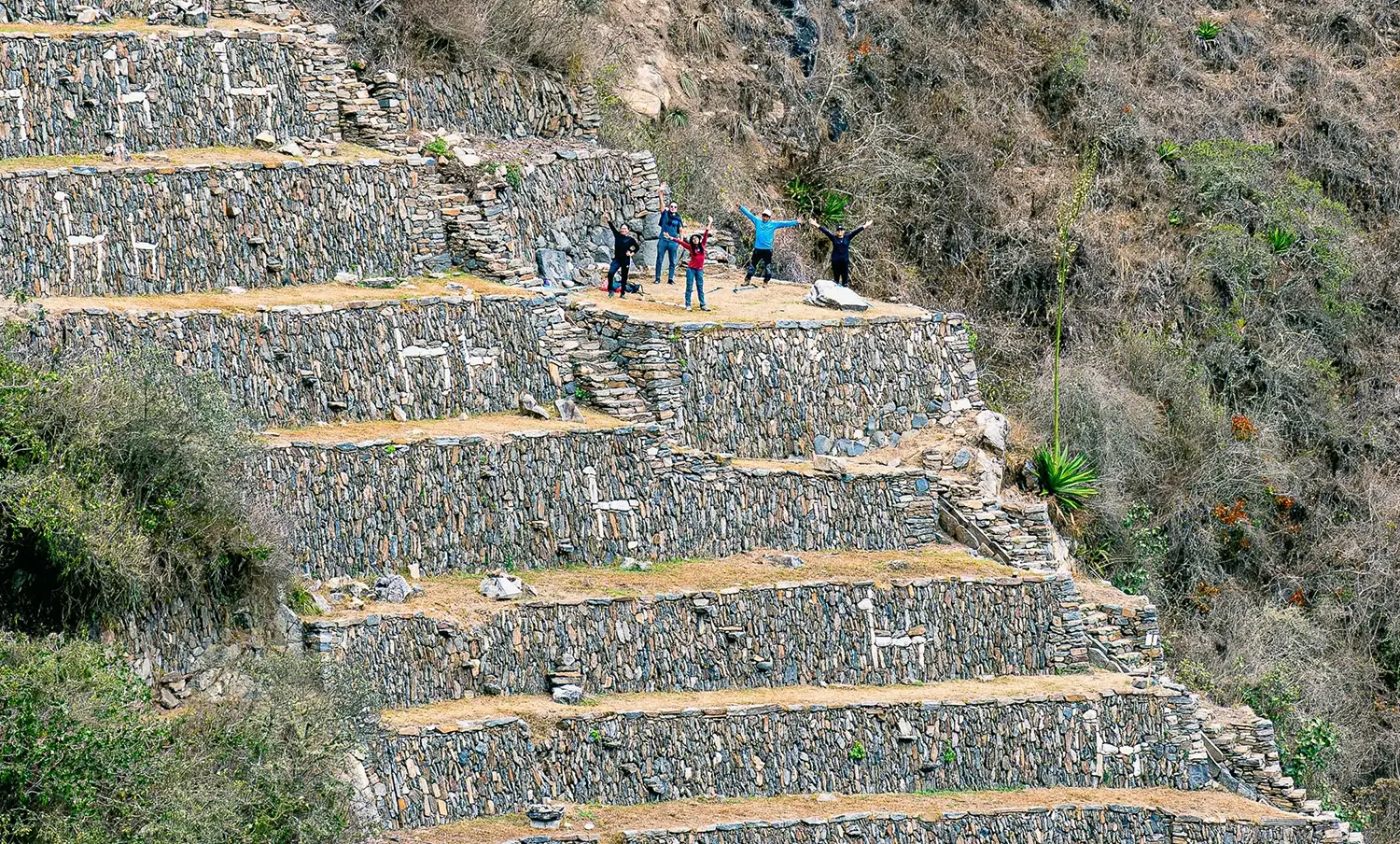
Intricately designed stone terraces at Choquequirao featuring white llama carvings. Photo by Jose Galarza on Pexels .
Deciding whether to trek to Choquequirao with a guided tour or independently depends on your experience level, comfort with remote trekking, and budget. Below, we break down the pros and cons of each option, along with key considerations like costs, permits, and tour availability.
Pros:
Cons:
Cost & Availability:
Pros:
Cons:
Costs:
Permits and Entrance Fees
If you’re an experienced trekker comfortable with remote trails, an independent trek can be an exhilarating and budget-friendly option. However, if you prefer a stress-free experience with expert guidance and logistics handled, a guided tour is well worth the investment.
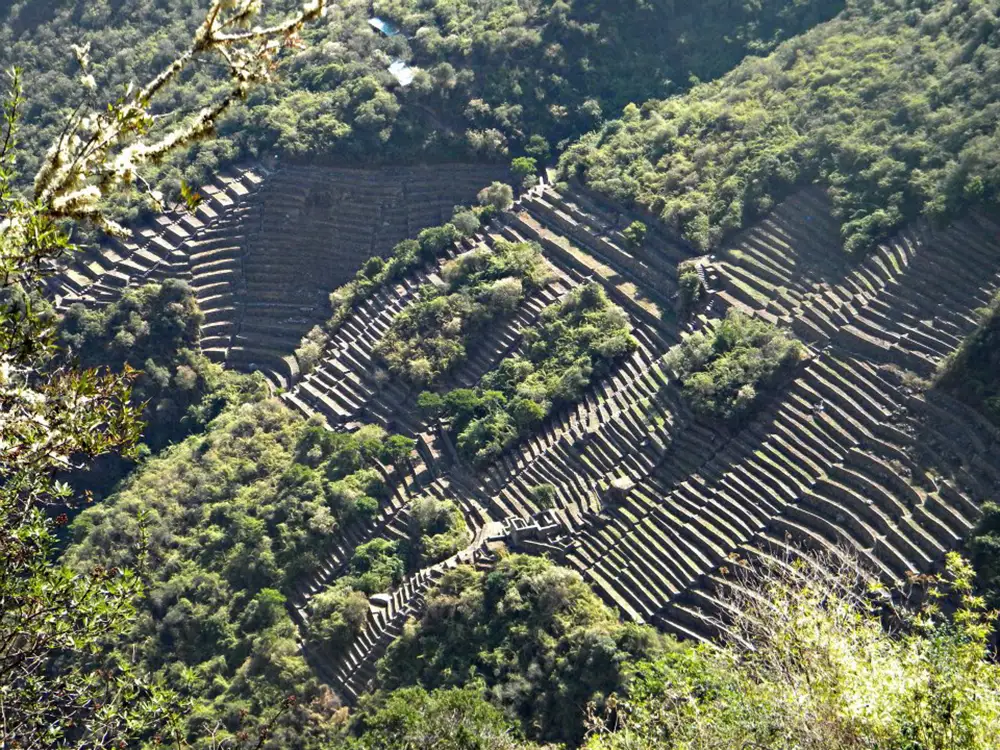
The well-preserved agricultural terraces of Choquequirao, showcasing the Inca's advanced farming techniques and ability to cultivate crops in the steep Andean landscape. Photo by Kaanek (Lucas Merino Pavéz), under the CC BY-SA 3.0 < https://creativecommons.org/licenses/by-sa/3.0 > license, via Wikimedia Commons .
Trekking to Choquequirao is an incredible adventure, but proper preparation can make the journey much smoother. Below are essential tips on finding water and food, choosing the best camping spots, and understanding the weather conditions you’ll face along the way.
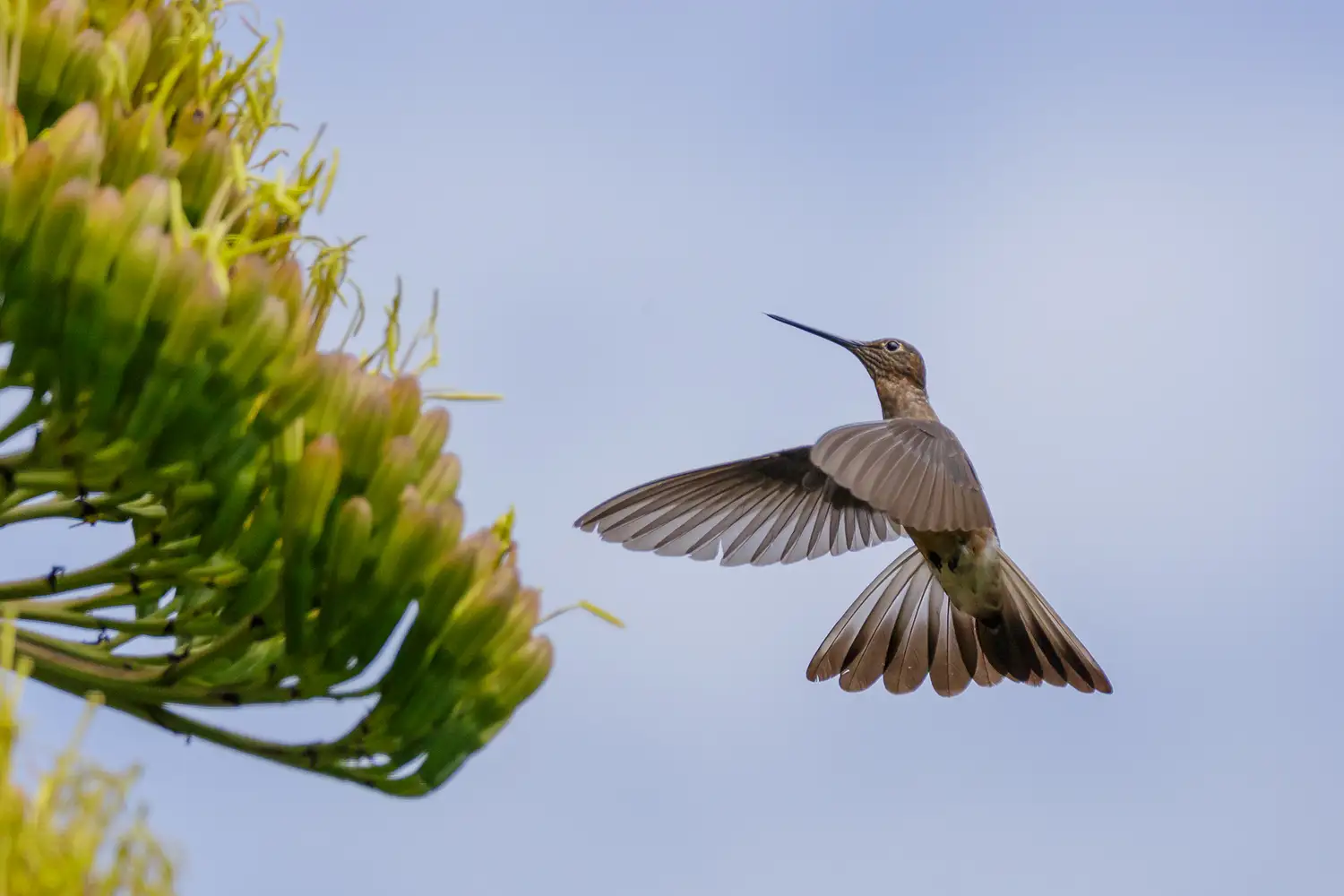
Spotting vibrant hummingbirds in Peru’s lush landscapes, a breathtaking highlight for nature lovers. Photo by Thomas Fuhrmann, under the CC BY-SA 4.0 < https://creativecommons.org/licenses/by-sa/4.0 > license, via Wikimedia Commons .
Reaching the trailhead for the Choquequirao trek at Capuliyoc requires some preparation, as it's located quite a distance from Cusco, the nearest major city. Below are your transport options to help you get started on your adventure.
While Capuliyoc is the most common trailhead for the Choquequirao trek, there are a couple of other access points that may be used, depending on the specific route or alternative trek plans.
To get to the Choquequirao trailhead at Capuliyoc, you can opt for a private car, shared minibus, or a public bus to Cachora, followed by a short taxi ride or hike to Capuliyoc. Cachora is also a common base point if you prefer to start your trek from the town itself. Regardless of the option, be sure to plan your transport in advance to ensure a smooth journey to the start of your adventure!
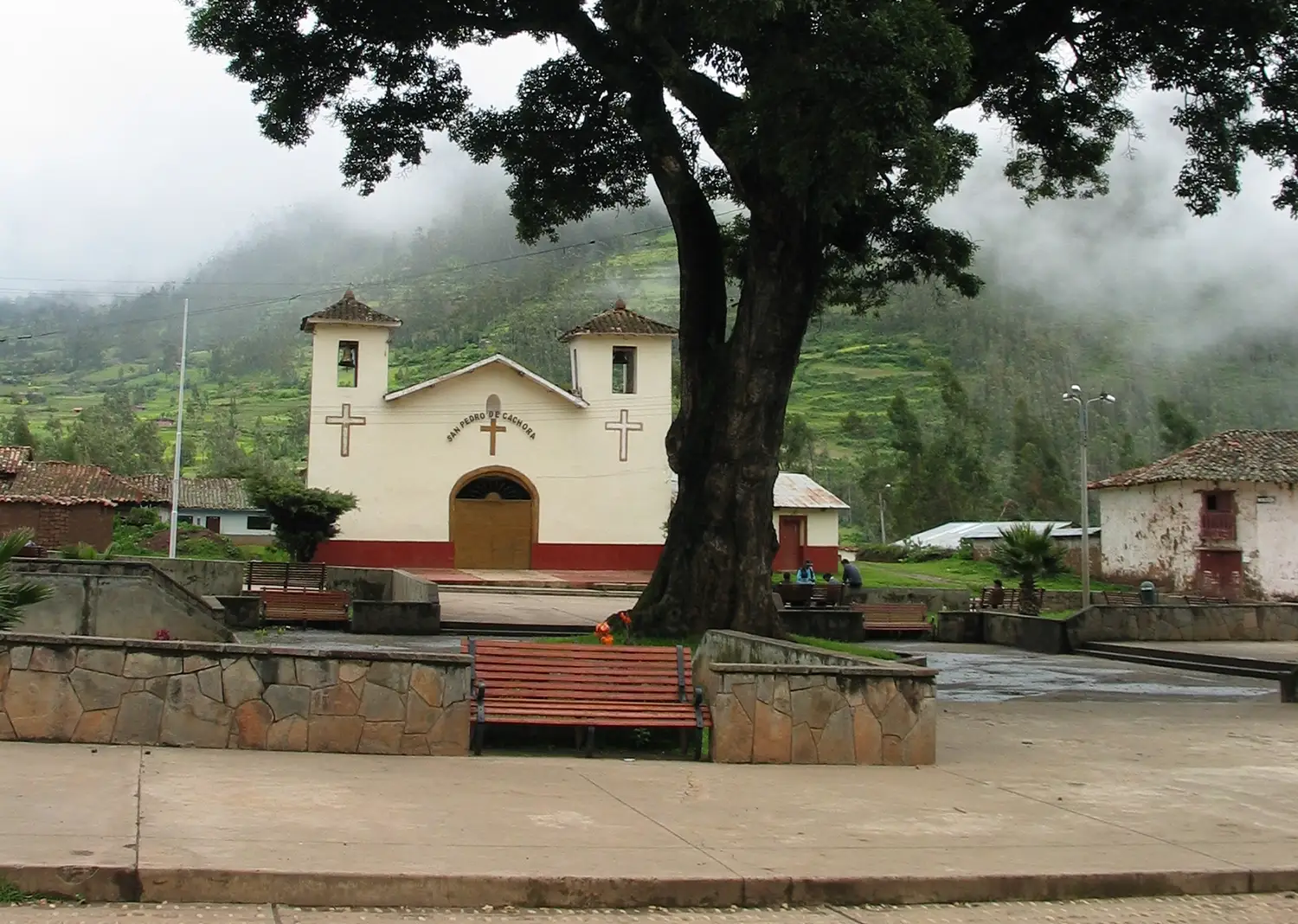
The charming main square of Cachora, a picturesque gateway to the Choquequirao trek. Photo by Bryan Dougherty, under the CC BY-SA 2.0 < https://creativecommons.org/licenses/by-sa/2.0 > license, via Wikimedia Commons , cropped to 50% from original size.
Trekking to Choquequirao is a challenging yet deeply rewarding experience, perfect for those seeking adventure, history, and solitude in the Andes. Unlike Machu Picchu, this incredible Inca site remains largely undiscovered by mass tourism, allowing visitors to step back in time and explore its mysteries in peace. The journey requires physical endurance, proper planning, and a spirit of adventure, but the breathtaking landscapes and archaeological wonders make every step worthwhile.
Before setting off, ensure you have the right gear, permits, and acclimatization plan in place. Pack light but wisely, respect the environment, and be mindful of responsible tourism practices to help preserve this incredible site for future generations. Whether you choose to trek independently or with a guided tour, Choquequirao promises an unforgettable experience—one that will challenge, inspire, and leave you with memories to last a lifetime.


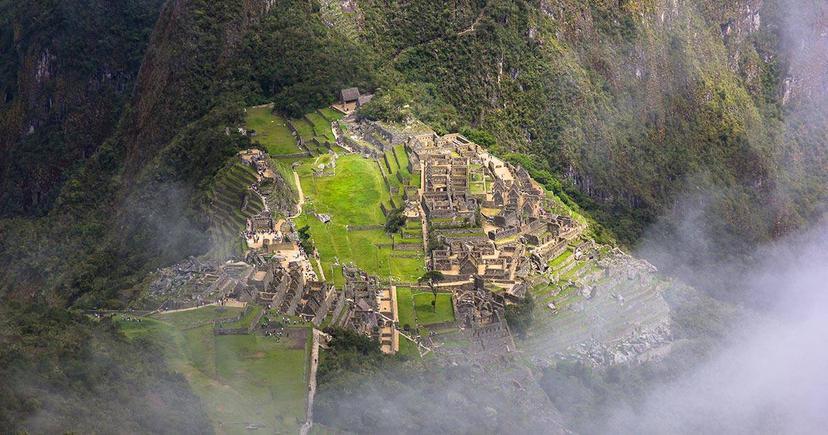
Email: [email protected]
Sign up to receive our newsletter for great articles, stunning photos, and special deals.